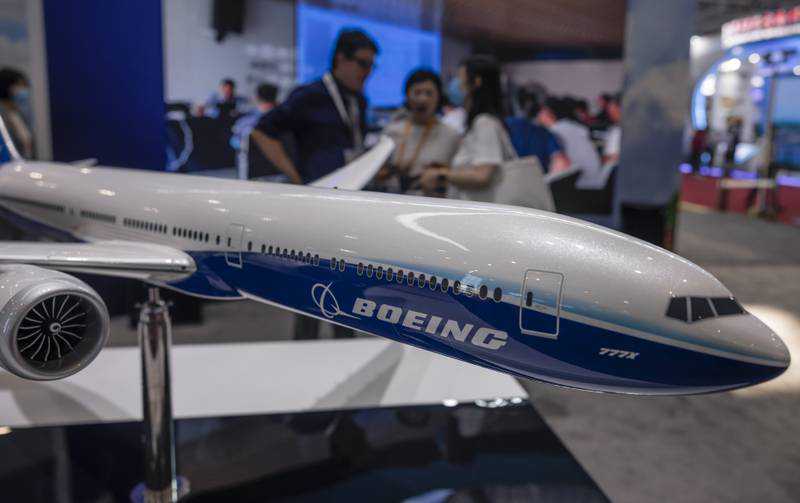Boeing's 20-year outlook for aircraft demand in Middle East remains stable

Boeing's 20-year forecast for commercial aircraft demand in the Middle East remained stable despite the world economy's hobbled recovery from the coronavirus-induced slowdown.
More than two thirds of aircraft deliveries are set to be used to expand fleets, with more than half of the total deliveries comprising single-aisle jets, Boeing said in its 2021 Commercial Market Outlook for the region.
The US plane maker has forecast demand for 3,000 new planes worth $740 billion by 2040 in the Middle East, little changed from its previous forecast of 2,945 planes last year.
“The Middle East region’s role as a global connecting hub continues to be important for developing markets to and from South-East Asia, China and Africa,” said Randy Heisey, Boeing's managing director of commercial marketing for the Middle East.
Global air travel demand is expected return to pre-crisis levels by early 2024 following the devastating impact of the Covid-19 pandemic on the global aviation industry. The crisis hammered the travel and tourism industry and disrupted the global supply chain infrastructure.
The fleet size of Middle East airlines is forecast to grow 4.1 per cent over the next 20 years.
Of the 3,000 new aircraft deliveries, 53 per cent will be narrow-body, single-aisle models such as the Boeing 737 and Airbus A320 models. The current single-aisle fleet of 660 aircraft is forecast to nearly triple to 1,750 jets by 2040.
The region's airlines will need 1,570 wide-body jets in the next 20 years to service a growing network of international routes in the long-term.
Twin-aisle jets will comprise 44 per cent of all deliveries by 2040, the highest proportion of any other region.
The passenger air traffic of Middle East carriers is expected to more than double at an average of 4.1 per cent every year through 2040, above the global average of 4 per cent but below last year's forecast of 4.3 per cent, said Boeing.
Regional economies are expected to expand 2.8 per cent in the next 20 years as they continue to reduce their dependence on oil revenue, according to Boeing's outlook.
"Growth will be enhanced by diversification of economies as there is increased focus on building tourism and infrastructure. A prime example of this is the Vision 2030 [economic reform programme] being carried forward by entities in Saudi Arabia," Mr Heisey told reporters during a pre-Dubai Airshow online briefing.
Middle East airlines continued to expand their air freight operations during the pandemic. The cargo volumes of regional carriers increased 19 per cent in the past 12 months, with two of the world’s top-five cargo airlines, Emirates and Qatar Airways, based in the region, Boeing said.
Boeing forecasts that the region will require about 196,000 new aviation workers by 2040. These include 54,000 pilots, 51,000 technicians and 91,000 cabin crew members.
This is below last year's forecast for 58,000 pilots, 59,000 technicians and 106,000 crew members when the Covid-19 pandemic forced global airlines to lay off or furlough millions of employees as aircraft were grounded and revenue withered.
Last month, Boeing raised its 20-year forecast for commercial aircraft demand globally, citing signs of recovery from the pandemic. The Chicago-based company forecast demand for 43,610 new planes valued at $7.2 trillion by 2040, an increase of about 500 planes over last year’s forecast.
Previous Story
- Etihad Airways raises $1.2bn in aviation's first sustainability-linked...
- Emirates introduces complimentary Expo 2020 Dubai day pass
- Emirates says flight ban from India, Pakistan, Bangladesh...
- JetBlue Pilots to Receive M1 iPad Pro
- JetBlue reveals new all-suite Mint cabins for flights...
- Airlines in Bangladesh lose Tk 13.61 billion in...
- COVID-19 shutdown: Airlines in Bangladesh counting huge losses
- US-Bangla Airlines Adds Two ATR 72-600 Aircraft To...